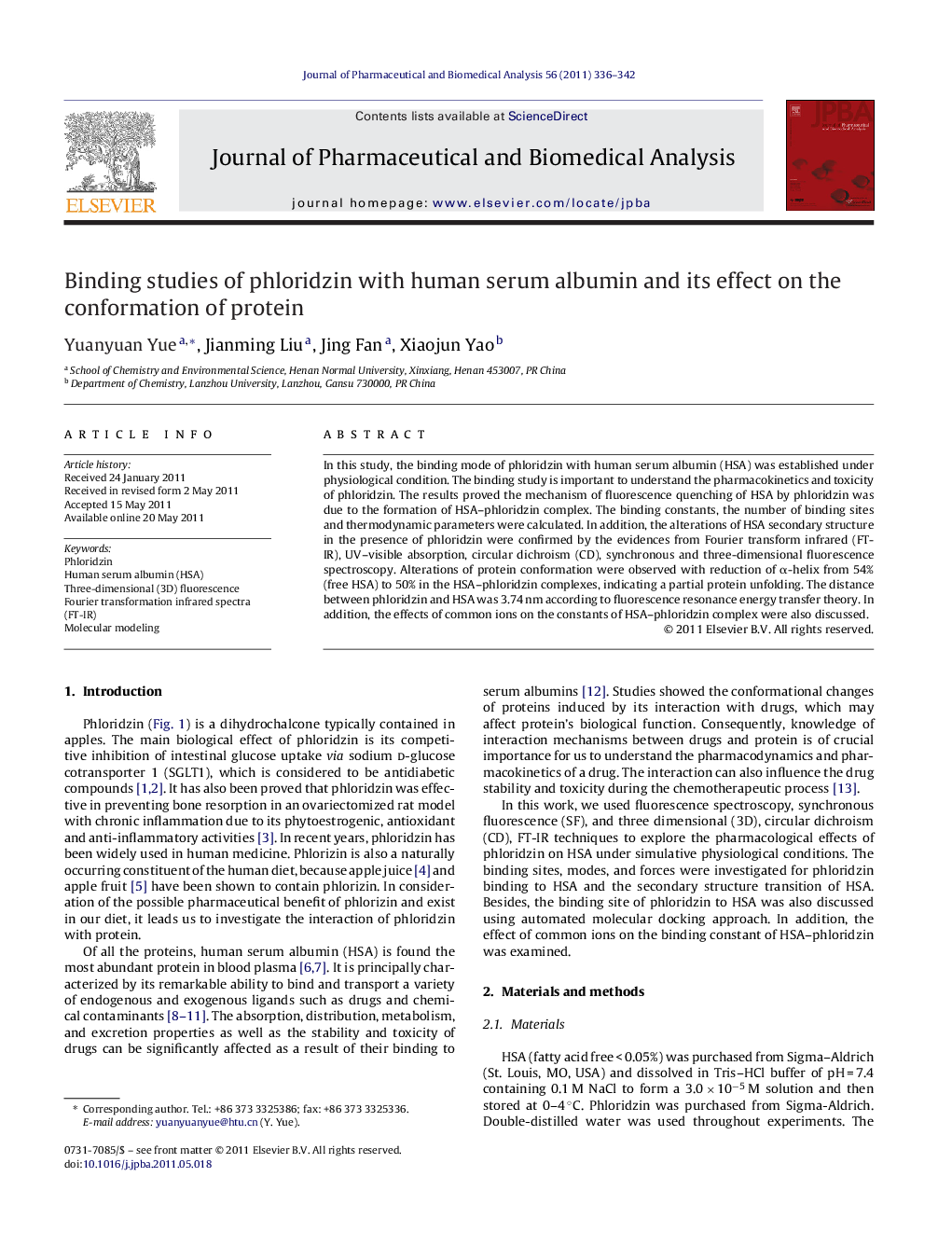| Article ID | Journal | Published Year | Pages | File Type |
|---|---|---|---|---|
| 1221171 | Journal of Pharmaceutical and Biomedical Analysis | 2011 | 7 Pages |
In this study, the binding mode of phloridzin with human serum albumin (HSA) was established under physiological condition. The binding study is important to understand the pharmacokinetics and toxicity of phloridzin. The results proved the mechanism of fluorescence quenching of HSA by phloridzin was due to the formation of HSA–phloridzin complex. The binding constants, the number of binding sites and thermodynamic parameters were calculated. In addition, the alterations of HSA secondary structure in the presence of phloridzin were confirmed by the evidences from Fourier transform infrared (FT-IR), UV–visible absorption, circular dichroism (CD), synchronous and three-dimensional fluorescence spectroscopy. Alterations of protein conformation were observed with reduction of α-helix from 54% (free HSA) to 50% in the HSA–phloridzin complexes, indicating a partial protein unfolding. The distance between phloridzin and HSA was 3.74 nm according to fluorescence resonance energy transfer theory. In addition, the effects of common ions on the constants of HSA–phloridzin complex were also discussed.
